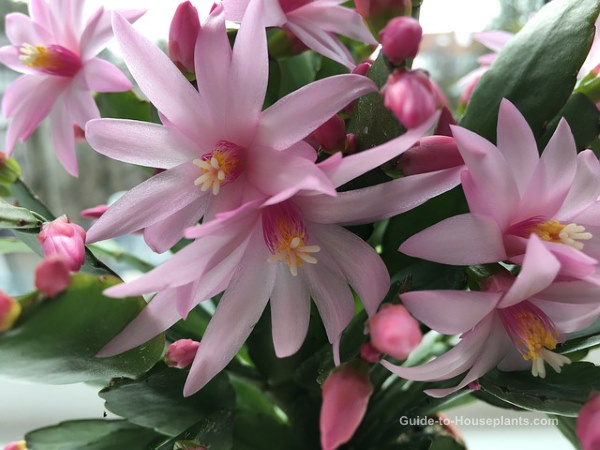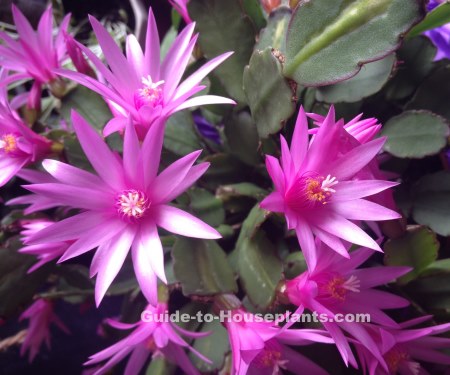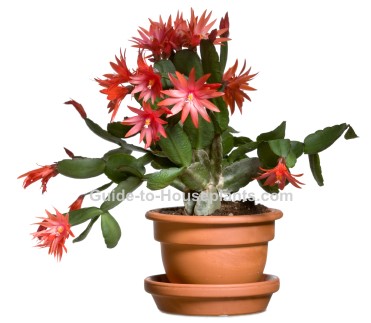Apr 5, Easter Cactus Plant Care: How to Grow Hatiora gaertneri Houseplants
Botanical Name: Hatiora gaertneri
Easter Cactus plant ushers in spring with a show of colorful flowers. Find out what light, water and humidity this holiday cactus needs, plus how to make it bloom.
 Bright light in spring will bring a profusion of gorgeous flowers. Photo: Matt Cody
Bright light in spring will bring a profusion of gorgeous flowers. Photo: Matt CodyGet to Know this Spring-Blooming Cactus
Easter cactus is a member of the Cactaceae family. Native to the South American rain forests, this cactus is epiphytic, making its home on trees. It holds onto tree branches with its thick, aerial roots.
Its stems are made up of flat, narrow segments connected by a midrib. You can distinguish it from other holiday cactus because its stem segments are not scalloped or toothed, and by its starburst-shaped blooms.
The biggest difference is its bloom time. You can expect an abundance of flowers in spring — typically April or May — that last about a month. Varieties are available in shades of pink, white, orange and red.
Display flowering Easter cactus in a hanging basket or set it on a plant stand to show off its colorful blooms.
How to Get Easter Cactus to Bloom
Coax blooms. Blooming results from 8-10 weeks of shorter, cooler days. Check the temperature requirements below. Give the cactus 14-hour nights. Put a paper bag or box over it if you need to block out sunlight. Once buds set, don’t move the cactus around. Flower buds are likely to drop off if the budding plant is suddenly exposed to temperature or light changes.
Give it a rest. After flowering, this South-American succulent needs a one-month rest. Water sparingly during this time and do not fertilize. Mist the plant every day if needed to keep up the humidity. After this rest, you can resume regular watering and fertilizing.
Keep it pot-bound. This holiday cactus blooms best when its roots are confined, so don’t be in a hurry to move it to a larger pot.
Good year-round Easter cactus care will bring a show of flowers year after year.
 You’ll find Easter Cactus for sale in a range of colors, including pink.
You’ll find Easter Cactus for sale in a range of colors, including pink.Questions, Problems and Solutions for Easter Cactus
Wondering when to repot? You can repot in late spring or early summer, after the one-month rest is over. Your cactus only needs repotted when it outgrows its container, probably every 2 or 3 years. Use a pot with a drainage hole to prevent soggy soil, a clay pot is ideal because it allows the potting medium to dry out faster.
Dropped buds or flowers? Once buds begin to develop, it’s a good idea to set your Easter cactus where you want to display it. Changes in light, temperature and humidity will likely cause its buds and flowers to fall off. That’s why blooming plants often shed their flowers when they are brought home from the florist. If this happens, don’t worry — your Easter cactus will bloom in abundance next year.
Wrinkled, limp stems are a sign the plant is too dry. Water thoroughly, then allow the top of the soil to dry out between waterings. Yellow stems indicate too much water.
Broken stems? Those trailing stems are somewhat brittle and can break off between segments. It’s a good idea to keep your plant where it won’t be brushed against. Don’t toss out those stem pieces — you can grow new plants from them. (See “Propagation” below.)
To prune…or not to prune? It’s not necessary. Stems will branch out naturally, so you don’t need to cut them unless you want to prevent your cactus from getting “leggy.” Wait till summer, after the one-month rest. Use sharp, clean pruners to cut between stem segments.
Something bugging your houseplant? Mealybugs are attracted to cactus plants. They look like tiny specks of cotton and tend to cluster at the base of the stems. You can scrape them off, then treat your cactus with insecticidal soap.
Easter Cactus Care Tips

Origin: Brazil
Height: 12-24 in (30-60 cm)
Light: Bright indirect light. Low light levels cause spindly growth and few flowers.
Water: Keep the soil evenly moist, but not soggy while plant is growing. After flowering is finished, water sparingly for a month while the plant rests. Stems will shrivel or wilt if the roots are too dry. Yellow stems indicate overwatering.
Humidity: Try to maintain 50% relative humidity for this rain forest native. Use a cool-mist room humidifier or stand the pot on a tray of wet pebbles. Check out these tips for raising the humidity for your house plants.
Temperature: To set flower buds, the plant needs cool 60-65°F/16-18°C days and 45-55°F/7-13°C nights. Once buds set, 70-75°F/21-24°C days and 60-70°F/16-21°C nights.
Soil: Mix 1 part potting mix and 1 part fine-grade fir bark. Good drainage is essential.
Fertilizer: Feed every 2 weeks with a balanced water-soluble fertilizer when watering. When flowering season is over, stop fertilizing for a month while plant is resting, then resume normal care.
Propagation: Take stem cuttings with 1-4 segments in summer. Allow the cut ends to dry for a couple days before inserting upright in moist perlite. Easter cactus stems root readily, in about 3-4 weeks.
Published at Tue, 05 Apr 2022 11:47:02 -0700